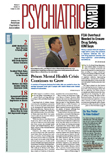Pioneer electrencephalographer, accomplished clinical neurologist, neurophysiological experimenter, and prized teacher—Robert Cohn, M.D., was all of these in the course of a prodigiously productive career that spanned 70 years. His integrative knowledge of brain function was equal to that of an entire panel of experts.
In 1935, while a medical student, he began work as an assistant scientist at st. Elizabeths Hospital in Washington, D.C. There his mentor was Karl Langenstrass, M.D., who had trained at the University of Jena under Hans Berger, discoverer of brain waves. Langenstrass was eager to establish an EEG lab at St. Elizabeths and asked his young assistant to undertake this task.
Cohn's first step was to build his own EEG machine. This he accomplished with advice from such eminent electrophysiologists as Hallowell Davis at harvard and his engineer, Albert Grass, as well as scientists from the Magnetic Laboratory of the U.S. Bureau of Standards. In addition, Cohn attended evening advanced physics classes given by world-renowned physicists Edward Teller at George Washington University and Karl Herzfeld at the Catholic University of America.
In establishing his EEG lab, Cohn made it a personal rule, never relinquished, to conduct an interview and neurological examination with each patient referred for an EEG. He followed this rule when asked to record EEGs on a series of patients presumed to be suffering organically based muteness. He was not at all surprised when the patients talked back to him; the researcher who had referred the “mute” patients was flabbergasted.
World War II brought additional demands on Cohn's lab, the only EEG facility in the Washington, D.C., area. All military neurological patients needing EEG evaluation were sent to him, including aviation cadets to be screened for any disqualifying evidence of epileptic propensities.
In 1943 he assumed active duty as a Navy medical officer and took charge of the EEG laboratory at the National Naval Medical Center at Bethesda, Md. In addition, he made EEG recordings during deep-sea diving experiments directed by famed Navy diving expert “Swede” Momsen. During one experiment Cohn realized the EEG tracing had gone flat and, despite his inability to swim, dove into the tank and rescued the unconscious diver.
Subsequent to the war, Cohn continued full time at the Naval hospital and in his spare time conducted a series of important electrophysiological experiments. He contributed to the understanding of left brain-right brain function by demonstrating that noise and verbal stimuli are processed by different sides of the brain. Among his other research were extensive studies on the visual system of the cat and on a variety of evoked sensory summation activities of the human brain.
In 1971 he began yet another multifaceted career at Howard University School of Medicine in Washington, D.C., as a professor of clinical neurophysiology and chief of the EEG laboratory. He became an inspiring legend and continued full time at Howard until his death at the age of 96 in 2005.
Cohn was a mainstay in national and international EEG organizations. He and Vladimir Liberson cofounded the Eastern Association of Encephalographers. Before coming to the United States, Liberson had been a pioneer electroencephalogapher in France. At his death in 1994 he left a mass of notes, many in Cyrillic script, for his intended memoirs. At the request of Liberson's widow, Cohn edited these into a book, published in 1999 and titled Brain, Nerves, Muscles, and Electricity. My Life in Science.
Cohn's own publications included more than 90 papers and six books, including two on clinical electroencephalography and two on aphasia. The latest was Clinical Electroencephalography: A Computerized Approach (2004). This reported his exhaustive endeavors in collaboration with Steve Ousley to achieve computer reading of the EEG, his dominant research passion for the last three decades of his life.
He cowrote several papers with his wife, Meta Neumann, a world-renowned neuroscientist at St. Elizabeths Hospital and a leader in differentiating Alzheimer's disease from arteriosclerotic and other forms of brain degeneration. She also earned the gratitude of several generations of neurologists and psychiatrists in the D.C. area for her refresher course in neuroanatomy and neuropathology in preparation for board examinations.▪
